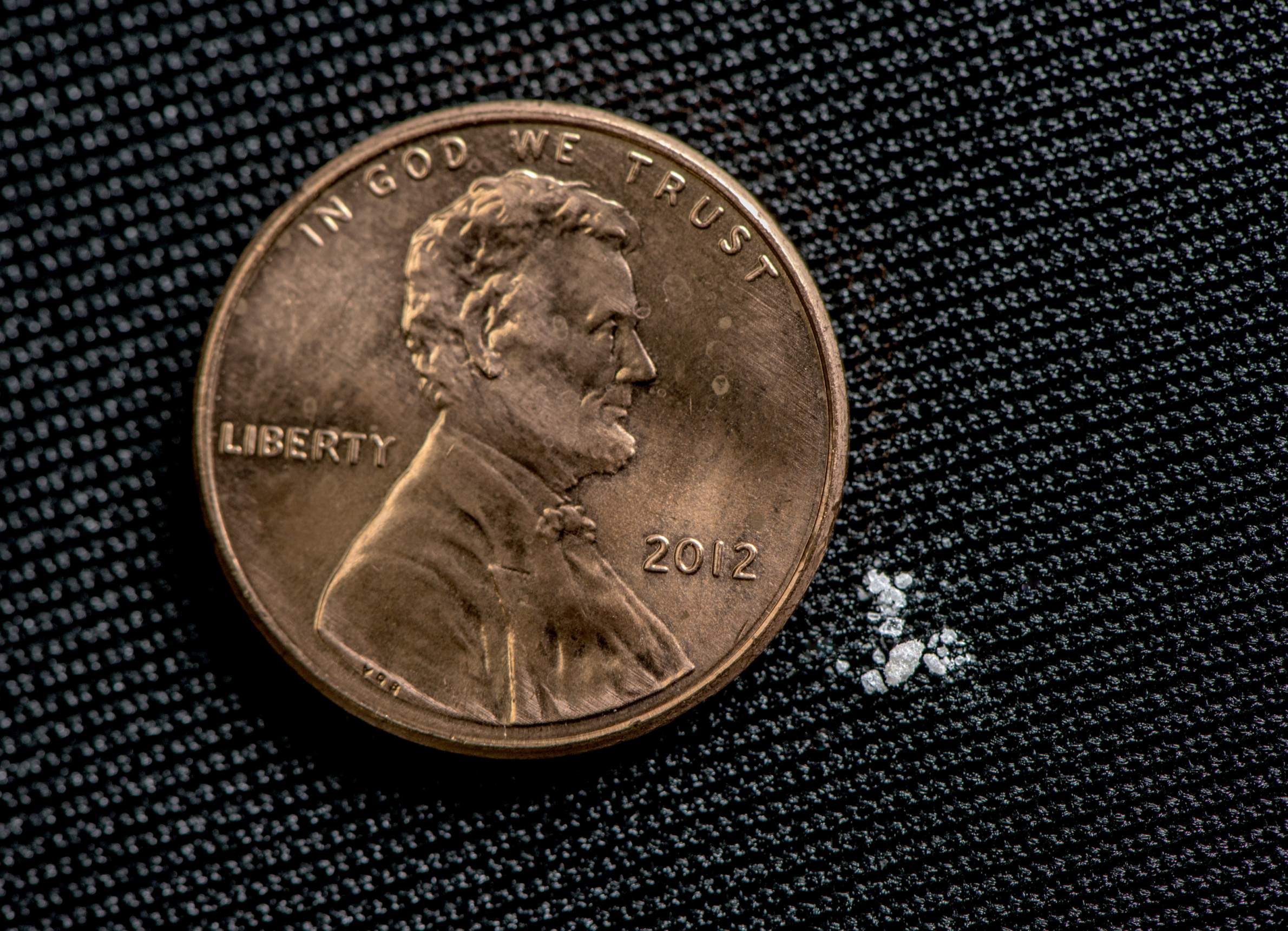
The Volatile Mix Of Drugs At Work In The Opioid Crisis

The opioid crisis has encroached on arguably all levels of society across the United States, the federal government officially deemed it a public health emergency. An estimated 91 people die every day from an opioid overdose, according to the Center for Disease Control and Prevention. Wisconsin is not immune to this epidemic, and there's no sign of overdoses slowing down.
The CDC estimates that prescriptions of opioid painkillers has quadrupled since 1999, and consequently led to an increase in opioid-related overdoses. While the number of opioid prescriptions in Wisconsin are reportedly dropping, deaths related to overdoses haven't dropped. The statewide rate of opioid-related overdose deaths has doubled over the past decade, and Milwaukee County is on track to reach 500 in 2017.

Gov. Scott Walker assembled an opioid abuse task force in 2016 to combat the epidemic, but the scope of the problem is daunting. Medical professionals on the task force, which also includes legislators and local government officials, argue that a limit on opioid prescriptions is not a solution on its own; rather, a broader change in pain treatment practices is needed. Some advocates for patients with chronic pain, however, have disputed the effectiveness of limiting opioid prescriptions, contending that such actions can hurt those who actually need these drugs for pain management. Dozens of cases of suicide have been reported after patients had their painkillers reduced.
But it's not merely prescription opioids that are leading to overdose deaths. Illegal heroin and synthetic opioids such as the strong, and often lethal, fentanyl and carfentanil are major components of the epidemic. Lori Edwards, a senior chemist at the Wisconsin State Laboratory of Hygiene, discussed the role of these drugs in the epidemic in an April 19, 2017 talk on the UW-Madison campus for the Wednesday Nite @ the Lab lecture series.
Fentanyl worries Edwards and her colleagues immensely, she said. It's about 50 times stronger than heroin, 100 times stronger than morphine, and is difficult to detect in toxicology testing. Edwards described how the use of fentanyl as a cutting agent in heroin and other drugs used recreationally are partially responsible for the rising number of overdoses in the state and across the U.S.. People who think they are simply using one substance, unknowingly use fentanyl, leading to overdose and possible death.
In her presentation, recorded for Wisconsin Public Television's University Place, Edwards explains the complicated history of heroin and opioids in the U.S., and how her lab's work continues to grow in importance in the wake of this epidemic. She also discussed how overdosing has become a societal concern because of money and resources needed to save lives.
Though Edwards is hesitant to label opioid and heroin abuse in the U.S. an "epidemic," she called the matter a public health crisis, noting that driving under the influence of heroin is "basically a homicide in action."
Key facts
- The need for drug toxicology tests at the Wisconsin State Laboratory of Hygiene has skyrocketed in the 21st century. In 2003, approximately 7 percent of all cases required drug testing; in 2016, that number had jumped to 30 percent.
- The Wisconsin State Laboratory of Hygiene is one of only a handful of labs to be certified by the American Board of Forensic Toxicology considered a prestigious honor. The lab is also one of the busiest in the nation, testing more than 20,000 specimens every year. The number one illegal drug the lab consistently tests for is marijuana. However, opioids have crept into the top five in recent years.
- According to the Drug Enforcement Administration, Denver is a major hub when it comes to the trafficking of heroin into Wisconsin. Some is also said to come through the Twin Cities as well.
- Drug users can spend hundreds of dollars a day to feed their addictions. The cost of one dose of heroin in Milwaukee can range between $12 to $15. A serious addict, might spend up to $200 a day on heroin,as a high typically only lasts a few minutes. Users who inject heroin not only puts themselves at risk for the drug's immediate effects, but also at risk for acquiring blood-borne pathogens, creating a broader public health concern.
- The type of fentanyl used as a cutting agent in heroin and other substances is not the same as the pharmaceutical-grade fentanyl often used after surgeries or for pain management. This fentanyl is often manufactured illegally in China, which is one of the top producers of this synthetic opioid. Chemists in China make different chemical variations of fentanyl, which is then often sold as heroin.
- Another dangerous synthetic opioid making its way into the heroin market is carfentanil. It’s 10,000 times stronger than morphine and a minuscule amount can be lethal. Carfentanil typically used as a large animal sedative. It made headlines in April 2017 when it was found in the system of a man who died in Milwaukee, marking the first carfentanil-related death in Wisconsin.
Key quotes
- On where overdoses are the most prevalent in Wisconsin: "We're seeing a big hot spot for overdose deaths in Milwaukee County and up in the Fox River Valley. We continue to get a lot of [cases] from Sheboygan County, Brown County, both of deaths and drivers under the influence of opioids."
- On how heroin gets into the United States: "It's most likely coming from Mexico though previous routes established by the marijuana and the cocaine trade. Mexico is number two in the world for producing heroin, with Afghanistan at number one. The quality of heroin coming from Mexico continues to improve, and they can harvest about 300 grams of the raw opium paste per day from their fields in the mountains of Mexico."
- On the commercial use of heroin in the late 19th and early 20th centuries: "Once they made heroin, the Bayer company jumped on that and were marketing it. They were producing metric tons of it and marketing it for anything from treating children when they're cutting teeth or ladies’ days … Pretty soon lots of people were getting addicted to it."
- On the addictive powers of heroin: "Long-term use of [heroin] can have many negative effects. It's very hard on your organs. There's not only the physical addiction but there's a powerful psychological addiction because you crave it. You crave it. You want that euphoria. That euphoria that has been described from interviews that I've seen with addicts as almost a sexual experience. And so, hence that very powerful draw to get more of it. They're always chasing that euphoria."
- On the use and cost of naloxone to reverse fentanyl overdose: "If [the user gets] caught in time and someone calls 911 to try to save them, they can give them naloxone. But, again, because [fentanyl] is so powerful, oftentimes they have to administer multiple doses of Naloxone. Naloxone, for an injection, costs about $60."



